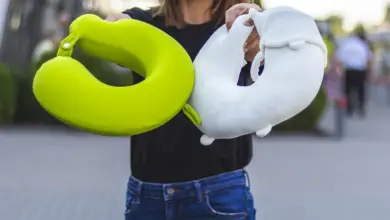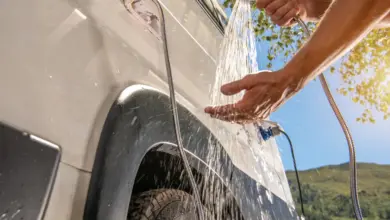Best Safe Tent Heaters
Camping in the cold weather needs preparation. Let us look at the best safe tent heaters out there. To go through our top recommendations, please read the table below
Table could not be displayed.Are you a regular camper? Someone who doesn’t exactly love the great outdoors, but seems to have agreed to sleep in it? Either way, you might be wondering if it’s possible to safely warm your tents with a heater of some description.
While there are some tent heaters that are advertised as “tent-friendly”, it’s still important to proceed with caution. In some cases, heats can be dangerous. That’s why they should always be used properly by following the manufacturer’s instructions.
We’ve scoured the internet for the recommendations of nature-lovers and camping connoisseurs to pick out five of the best safe tent heaters. All of these heaters are great to use for cold weather camping. But remember, each is different and comes with its own set of rules.
Our convenient, concise Buyer’s Guide lays out all of the safety information you need to keep in mind before and after making your purchase. We also explain the features that make a high-quality heater in general – so be sure to read it.
Have more questions about heaters? Then scroll to the bottom. There, you will find answers to common asks from customers who are also looking to find an appropriate heater.
Happy, safe, and warm camping!
Top 5 Best Safe Tent Heaters
Mr. Heater F232000 MH9BX Buddy
Highlights: Capable of heating an area of 225 square feet, and has an ODS detector to keep you safe.
Eagle eyed shoppers will notice that Mr. Heater is one of the most popular manufacturers of warming devices, including tent heaters. They are so good that we’ve recommended two of them on our list, with the Buddy being our favorite tent heater.
To start, the Buddy heater packs quite the punch, keeping your toes warm on the coldest days. It’s capable of producing between 4,000 and 9,000 BTU that radiates outwards for 225 square feet. What does this mean? Basically, it’s powerful enough to heat up the biggest tents. And it burns clean by using propane, making it almost 100 percent energy-efficient.
As for safety, it has built-in safety features. The heater automatically shuts off if accidentally tipped over, when the pilot light goes out, or if it detects low oxygen levels (ODS).
One of the best things about the Buddy heater that not all heaters have is a carry handle. Sure, this makes it easy to carry to your campsite, but it’s also good for carrying the heater around your tent when it’s pumping out heat.
The heater is also super simple to use. Lighting up is as simple as rotating the pilot knob, thanks to an integrated Piezo sparking mechanism which handles everything else. No more messing around with matches and freezing cold hands!
The maximum recommended run time is three hours, which should never be exceeded under any circumstances. We think that’s more than enough time to adequately heat up your tent!
Pros:
- ODS detector and auto shut-off when tipped over
- 4-9,000 BTU of heat for a toasty warm tent
- Easy lighting with instant ignition of pilot
- Produced by a trustworthy manufacturer
Cons:
- Propane tank sold separately
No products found.
You may also like How To Layer Clothing – A Complete Guide
Brightown Mini Desk Heater
Highlights: Low wattage to prevent tripping campgrounds electricity outlets, and heats up to 100 square feet area, .
Small, sleek, and bright orange, this simple space heater from Brightown is low wattage, working at 110V or 400W. This is great, as it’s unlikely to trip the circuit of your campground’s electricity outlets when you’re using it.
Emitting plenty of heat at a distance of 100 square feet, it remains quiet and out of the way. You might think you’d hardly notice it’s there because of its size, but you’ll certainly feel the benefit of its heat.
It’s incredibly easy to use. A singular on and off switch at the back is used to activate, and a dim red glow indicates power. With a five and a half foot outlet cord that should be plenty long enough if used with an extension.
Made of flame-retardant, sturdy materials, the outer surface stays cool, though still shouldn’t be touched. There’s also an immediate shut-off function should the unit be accidentally tipped over in use.
One year’s manufacturer warranty provides plenty of reassurance you’™ll be satisfied with this product. However, in the event you aren’t, you’ll be able to receive a replacement or a refund without any hassle.
Pros:
- Affordable yet powerful
- Sturdy, with inbuilt tip-over safety mechanism
- Easy to spot yet cute and compact
- Lightweight, only 1.55 lb
Cons:
- No ODS detector for added security
No products found.
Mr Heater F215100 MH4B Little Buddy
Highlights: Budget friendly, with a low oxygen ODS system.
Another offering from our friends over at Mr. Heater! You’ll find this smaller, slightly more budget friendly Little Buddy is like the little brother of our first pick. But it certainly doesn’t pack any less of a punch, we promise!
Indoor-safe for rooms up to 95 square feet, it offers a continuous 3800 BTU of heat with a 45-degree angled head. This is an excellent solution for keeping your tent warm enough without risking exposure to excessive carbon monoxide.
Speaking of too much gas, an automatic shut off system means that this heater detects when your oxygen levels are low. It then immediately stops functioning, to keep you and your family safe.
Likewise, should the heater be knocked over, it will also automatically shut down until righted. This mechanism should reassure users intending to place it in smaller tents! You should still be very cautious but are at a much smaller risk of a fire breaking out.
Powered by a lightweight, disposable 1 lb propane cylinder (sold separately), its maximum run time is 5 and a half hours. However long you have it on, ensuring a ventilation area of four square inches minimum air flow is necessary.
Pros:
- Well produced heater from trusted manufacturer
- All necessary safety features for in-tent use
- Can be used for five hours
- Small, sturdy, but lightweight
Cons:
- Gas must be purchased separately
No products found.
You may also like Best Extreme Weather Tents
AmazonBasics 500-Watt Ceramic Small Space Mini Heater
Highlights: Budget friendly, with a built in tip over sensor.
Cheap, cheerful and surprisingly stylish, this cube-shaped personal heater comes in black, blue, red and pink. It makes an aesthetically pleasing addition to your camping gear, and it’s also great for saving packing space.
Powered by convection heating, the efficient, naturally conducive ceramic coils used to heat up your surroundings achieve desired temperatures in seconds. Forget holding your hands up to a campfire and shivering until you warm up!
A sturdy base and in-built tip-over sensor are excellent at preventing fire hazards. You can utilize this heater safely in your tent for a good couple of hours without worrying it’s going to tip!
Manually controlled with a simple on/off switch and one heat setting, it’s incredibly easy to use. Creating minimum noise when plugged in, it’s perfect for setting up in the confines of your tent provided you ventilate adequately.
It requires 500 watts in order to power, so make sure you check that this electrical device isn’t going to fry the campground circuits. It may fail to work because of their lack of power – electricity supplied there tends to be much lower in wattage.
Pros:
- The most budget friendly heater on our list
- Little but powerful, heating up in seconds
- Not run by gas, more energy efficient
- Anti-fire tip-over sensor for your safety
Cons:
- Requires electricity to function
No products found.
Mr. Heater MH12B Hunting Buddy
Highlights: Propane based in case you can’t access electricity.
Ideal for hunters as the name suggests, the Hunting Buddy from Mr. Heater is last on our list but certainly not least. With a unique camouflage design and dark colors, it’s perfect for keeping a low profile while you camp out and prepare to hunt.
Producing between 6,000 and 12,000 BTU powered by liquid propane, it swiftly heats up enclosed spaces up to 300 square feet. A swivel regulator allows user adaptation for use with remote, non-disposable fuel supplies.
Featuring both an Oxygen Depletion Sensor and the classic tip-over safety shut off feature, you’ll be able to use it in your tent without any concerns. Knocking it over and starting a fire or being exposed to carbon monoxide aren’t possible!
Lighting up your heater is as simple as pushing and turning the knob with an internal electric ignitor for instant access to heat. Temperatures are easily adjusted simply by turning that knob clockwise or anti-clockwise.
Pros:
- Ideal for use when camping for hunting purposes
- Powerful heat range of 6-12k BTU
- Safety features to reassure and protect
- Carry handle for extra portability
Cons:
- Adapting the power supply requires purchase of a separate hose and filter
No products found.
You may also like Are National Parks Open in Winter?
Best Safe Tent Heaters – Buyer’s Guide
Is It Safe To Put A Heater In A Tent?
Many campers, especially hunters who hide out in especially cold conditions, have been known to use a heater. Whether electric or gas-powered, they’re a popular choice for keeping warm.
You can use either heater in a tent safely, but both kinds pose their own risks. It’s imperative to heed the following safety precautions: failure to do so could result in serious injuries or even death. Protect your loved ones and stay warm safely!
Any heater can be deadly used in a tent if not done correctly, even if it proclaims to be safe for use on camping trips. Be particularly careful and avoid using them around young children or pets, who have difficulty staying away from danger.
Preventing Risks
Gas heaters, usually powered by natural or propane gas, can produce carbon monoxide in larger than average quantities. This is dangerous for humans to inhale: bringing one of these into your tent without taking caution could be fatal.
A tent usually has a built in vent or two that you should absolutely open. Consider also compromising your wind protection by unzipping your tent flaps a little for improved airflow. It’s worth it, and it won’t let too much of the heat escape.
You should never leave any kind of heater on overnight, as that poses a serious fire hazard. The CO2 production involved in powering a gas heater makes this even more necessary. Only run it for an hour or two, and never fall asleep with it on.
Prolonged exposure, while you’re not awake, means you could miss early signs of carbon monoxide poisoning. Symptoms include dizziness, drowsiness, nausea, confusion or a headache and should be taken very seriously.
If you experience any of the above symptoms while camping and you happen to be using a gas heater in an enclosed space, leave your tent. Open up all of the zips and allow air in, turn off the heater and seek medical attention immediately.
Electric heaters can also be dangerous, as they are more lightweight and easier to accidentally disturb or knock over. Left unattended, this could cause a fire if the proper preventative measures haven’t been taken by manufacturers.
They are also, as all fires tend to be, extremely hot, and will absolutely burn you if you touch them. It sounds easy to avoid, but remember, tents are more cramped than your house and tripping over things is more likely.
However, we would recommend them much more than gas heaters as they do not involve combustion. Rather, they usually involve the heating of ceramic cylinders that then project heat, which although potentially harmful, isn’t actively dangerous.
Above all, it is advised that you prioritize taking thermally-rated sleeping bags and pack appropriate clothes. Making sure to eat and drink plenty before bed will also aid your body in keeping warm while you sleep.
You may also like Setting up a Winter Campsite
Features To Look Out For
Size
Aiming for a small or ‘portable’ heater is your best bet. This will reduce the amount of space it takes up both in transit and in your tent! However, that doesn’t necessarily mean it will be any less powerful or good at its job.
Oversized heaters pose more of a fire risk than their littler counterparts. Knocking them over exposes a greater area of your tent to a fire hazard. Plus, larger gas heaters produce more carbon monoxide, which you want to avoid where possible.
If your tent is for more than four men, or has separate rooms, you can probably afford to opt for a bigger heater. Ensure everything is ventilated as much as possible at all times, though!
Safety Features
Electric heaters that feature built in tip-over detectors are best. Immediately cutting power to the heater, they vastly reduce the possibility of a fire or damage to your tent. Camping equipment can be flimsy and flammable at the best of times!
Gas heaters with an inbuilt ODS or oxygen depletion sensor are the best to use inside a tent. They will alert you if you have not ventilated sufficiently and are putting yourself at risk of carbon monoxide poisoning.
Of course, you should make it your priority to avoid covering or blocking the heater. Place it as far away from your tent walls as possible! This ensures it cannot be a fire hazard, or exposed to water or damp from the outside of the tent.
Ventilation, obstructions and observation are key words to bear in mind if you’re going to use a heater in your tent. AKA: that there is maximum airflow, the heater itself is unobstructed, and you never leave it turned on unattended.
Noise
Traditionally, space heaters (the electric kind) don’t make any detectable sound at all, unless they oscillate. In this case, you’ll probably hear the faint hum of the rotating motor. It isn’t difficult to tune out at all and could even be soothing!
Gas heaters are constantly burning, though. Although you might not be able to visibly see this process, you’ll certainly be able to hear it in close proximity. This is good, as it will discourage you from leaving it on all night by accident!
You may also like How To Make Your Winter Sleep System
Best Safe Tent Heaters – Frequently Asked Questions
How can you keep warm in a tent at night without a heater?
Looking for old fashioned methods of staying toasty, that aren’t dependent on pitching up at a campsite with electricity? There are other ways to stay warm in your tent, which also have the benefit of being much cheaper than a heater.
Maybe it sounds obvious, but do not underestimate the power of bringing several blankets. Wrapping yourself up inside your sleeping bag, like a caterpillar in a cocoon, is the cheapest way to get warm.
Use towels to line the entryway and sides of your tent, and ensure everything is properly zipped down when you turn in. This will protect you from wind and keep out any bugs, which is an added perk.
Bring along a tent mat designed purposely for all-weather camping, typically made from foam. It will raise you slightly and protect your back from the cold, damp floor beneath. It may help with contributing a bit of warmth too!
Though not traditionally used in the USA, take a leaf out of the book of UK campers! Why not pack a hot water bottle or five? Simply fill the covered, rubber bottles with boiling water before bed, pop them in your sleeping bag and feel the heat.
You could improvise this with a non-plastic bottle lying around your house. Make sure to wrap it in a dish towel or blanket to prevent contact burns. Their exteriors can get mighty hot once full!
Packing your coziest thermals and thickest socks is always a good idea. They don’t even have to take up much room in your rucksack if you pack neatly enough! If you’re taking boots, for instance, roll them up and pop them inside. Voila!



